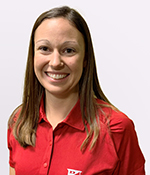Early Season Stress; Post Emergence Herbicide Applications
BY Dairyland Seed Agronomy Team
WATER AND COLD STRESS
Last week’s newsletter touched on managing our way through the droughty conditions that have persisted in parts of the Dakotas and into Wisconsin. Last week’s rain systems alleviated some of those areas, but brought excess moisture to parts of the eastern Midwest. Along with the colder temperatures we have all experienced the last couple weeks, Mother Nature has been testing the 2021 crop early. We have touched on cold temperatures in nearly every newsletter thus far in 2021, so it has been very front of mind. As we track this evolving storyline, let’s review a few of our observations thus far and touch on some expectations for the coming weeks.
- Early indications are that cold stress has been mostly cosmetic this year.
- Some early plantings are taking 15 to 20 days to emerge this season. Seed treatments tend to pay big dividends in these scenarios because of the increased exposure to seed pests that may eat or rot the seed.
- Keep a close eye for surface crusting where pounding rains sealed the soil after planting.
- Flooding prevents the seeds or plants from breathing as they should and can kill a crop in 1 to 3 days. If water recedes, timely assessments can make a big difference in management decisions.
- Cold temperatures will prolong the following:
- Early corn will be pale green until chlorophyll kicks into gear with heat accumulation.
- Nitrogen fixation for soybean takes off at V2-3, so expect pale coloration until then.
- If stands are less than expected, see the May 6 agronomy newsletter article about the importance of early season scouting to aid in replant decisions. It generally takes ~30 percent stand loss in corn and 50 percent or more stand loss in soybean to justify replanting.
- Excess moisture can remove nutrients, primarily nitrogen, from the soil. Responding early will make it easier for you and your input suppliers to arrive at a solution.
- Some notes on alfalfa:
- We have seen little damage to new seedings. With an ability to withstand air temperatures into the low 20’s, new seedings are very cold tolerant until the V2-3 growth stage.
- Frost damage to existing stands could reduce some tonnage and quality on first cuttings, but won’t create long term damage.
- Existing stands have slowed where cooler and/or drier conditions have existed. We are still expecting a normally timed first cutting in most areas.
Weather outlooks show a warming trend in the coming days, which should keep us on track for the early part of the season.
POST EMERGE HERBICIDE APPLICATIONS
As the calendar shifts to mid-May and early June, post emerge herbicide applications move to the top of the to-do list. In addition to the usual challenges, this year has just an extra bit of challenge to address.
Before we address the best recommendations and strategies, let’s discuss supply. Yes, there has been discussions on supply of certain products especially in the area of glyphosate and glufosinate. We suggest checking with your local ag retailer as to their local inventory as some may have ample supply while other may be tight. Keep this in mind as you plan your upcoming herbicide program. For Enlist E3® soybeans, the supply of Enlist One® herbicide is very good, and we see no issues.
We recently had a chance to discuss post emergent herbicide program recommendations for corn and soybeans with Nate Wyss, Market Development Specialist with Corteva Agriscience Crop Protection. A quick summary of his recommendations is below.
For corn, the easiest solution from Corteva Agriscience will be Resicore® at a rate of 1.5-2.0 QT. Using Resicore with some pretty standard tank mix partners such as atrazine and glyphosate, is one of the most broad spectrum and successful programs for early post that will control most of our broadleaf or grass weed that we’ll come across. Another very popular option would be 2.0-3.0 pt SureStart® II. This gives us a great value and flexibility to cover a huge variety of weeds. Common tank mix partners would be a mesotrione containing product, such as Realm® Q, along with atrazine and glyphosate.
For soybeans, most of our residual options from Corteva are pre-emerge type products, so our offering becomes much simpler in post emerge. Our best post-emerge option would be EverpreX® at 1.0-1.33 pt in a tank mix with whatever our available trait herbicides are (Enlist E3® technology, Liberty®, Roundup Ready® Xtend,etc). EverpreX will give great residual on all small seeded broadleaves and grass species, but will not provide any burndown control.
For a more tailored program speak with a local Corteva Crop Protection your Dairyland seed representative will have their contact information. And, as always, please read and follow the label!
Check all labels for local application rates and guidelines.
 |
 |
 |
 |
| Brian Weller Western Region 507.456.3034 |
Dan Ritter Central Region 219.863.0583 |
Branden Furseth Northern Region 608.513.4265 |
Amanda Goffnett Eastern Region 989.400.3793 |
